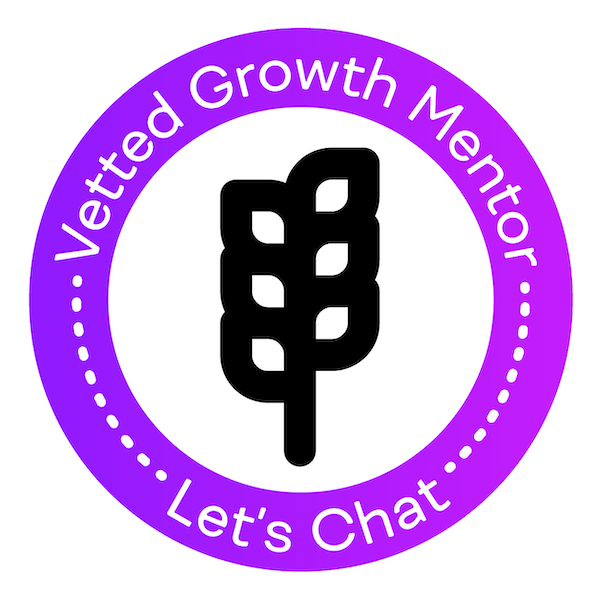Build your growth marketing system
Article originally published in February 2023 by Stuart Brameld. Most recent update in February 2023.
Request a demo
Project management for growth and agile marketing professionals. Map your acquisition funnel, integrate analytics and run agile experiments.
Experiment results
Recent experiments results include competitor SEO, AI-driven content, exit-intent modals and AB testing homepage headlines.
Case study
"We are on-track to deliver a 43% increase in inbound leads this year. There is no doubt the adoption of Growth Method is the primary driver behind these results."
![]()
Certified
We are vetted mentors with Growth Mentor and a partner with the Agile Marketing Alliance.
We believe marketing organisations should be thought of as systems, though rarely do we see teams operating in a systematic or methodical way.
At its most simplistic, this marketing system takes inputs (people, processes and technology) to generate outputs (long-term customer relationships and revenue). Systems are made up of parts that interact, that create a whole in order to create a result
The goal of most businesses is therefore to find balance between how much customers are worth to the business versus how much it costs to acquire them.
Benefits of marketing systems
The main benefit from building a marketing system is to make your entire marketing process more effective, and ultimately to build a marketing flywheel.
The benefits to building a marketing system include:
- Clear priorities
- Repeatable processes
- Easier scaling
- Autonomy and accountability
- Improved measurement and results
Core components of a marketing system
We believe successful growth marketing teams are made up of 5 components, which can be thought of as the marketing operating system. These are:
- Strategy
- Culture
- People
- Process
- Technology
In general, we see considerable focus on people and technology, with a lack of understanding around strategy, culture and process. The system defines the rules by which these core elements interact.
“A system is a group of interacting or interrelated elements that act according to a set of rules to form a unified whole.”
Wikipedia
1 Strategy
Strategy and tactics can work together but you need clear direction and measurable goals (strategy) before implementing actions and tools (tactics). You need a growth marketing strategy that aligns your actions with your company’s vision and goals. You need clear KPIs that show what you are doing and why it matters. You need a strategy (not a plan) that helps you prioritize and focus. You need well-defined KPIs that help you allocate resources and capital effectively. Doing Google ads, LinkedIn ads, Twitter ads, Facebook ads, LinkedIn organic, search engine optimisation, influencer marketing and email marketing is not a strategy.
2 Culture
Culture is crucial for unleashing the full potential of your team.
“The thing is, incremental daily progress (negative or positive) is what actually causes transformation. A figurative drip, drip, drip. Showing up, every single day, gaining in strength, organising for the long haul, building connection, laying track — this subtle but difficult work is how culture changes.”
Seth Godin
Your marketing team needs to know and understand how the system works and to be willing to try new things in a safe environment. You want people to learn from failures and to measure success by outcomes not outputs, to participate in coming up with growth ideas, and to adopt and agile approach. You may not have all the right elements from the start, but you should foster and develop this mindset as soon as possible with a culture of experimentation.
3 People
It’s unlikely you’ll have all the people you want (or need) on day one, which is why strategy is so important. Your agile approach, and proving results with data, is the way to prove your value and get buy-in from stakeholders and leadership for further investment. People are, after all, your most important asset. We believe the 10/90 rule still holds true and as the Chief Martech himself says – invest more in talent than tools.
“It doesn’t make sense hire to smart people and tell them what to do; we hire smart people so they can tell us what to do.”
Steve Jobs
Without the right skills in-house you can always decide to work with a growth marketing agency.
4 Process
Growth comes from experimenting constantly and deliberately and scaling as you go. This means constantly running experiments and following best practises in terms of ideation, experimentation and growth team meetings. A focus on process ensures your growth marketing team is always operating at maximum efficiency. Investing in a growth marketing platform is a good first step. Process is important because growth compounds over time.
“If you can’t describe what you are doing as a process, you don’t know what you’re doing.”
W. Edwards Deming
5 Technology
Technology and tools are a necessary part of every growth team, though the latest ABM platform is unlikely to move the needle for your organisation. Ensure technology purchases are aligned with your strategy and ensure new strategies are proven with experiments first before scaling with new technology.
Marketing and systems thinking
A systems thinking approach (also known as system theory or systems sciences) can help in framing how we think of marketing as an organisational function. It is a way to consider all the factors and interactions that could contribute to an outcome beyond just linear cause and effect.
“Systems thinking is an integrative way to view a large and complex issue as part of a group or system of elements that function together as a whole.”
Karen Higggins 2014 Economic growth & sustainability: systems thinking for a complex world
A systems thinking is an approach is based on the belief that the component parts of a system will act differently when isolated from the system’s environment or other parts of the system.
The goal is to think less of marketing as an isolated function but rather to zoom out and consider the bigger picture (the organisation) in which it operations.
Here are some basic systems thinking concepts and questions to consider with regard to your marketing or growth organisation:
- What are the interrelationships, linkages, interactions and behaviours within the marketing organisation that influence success?
- What are the interrelationships, linkages, interactions and behaviours the marketing organisation has with other teams that influence success? What are the external factors that influence your success?
- What needs to change both within and outside of your team to better maximise your organisations effectiveness?
- Where are the boundaries of your current marketing and growth activities? Are these boundaries resulting in missed opportunities?
- How do other aspects of the organisation influence the success of the marketing organisation? What are powerful leverage points outside of existing marketing org boundaries? Where are new opportunities for partnerships or collaborations?
Resources
Recommended additional reading on marketing systems, growth systems and systems thinking in general.
Final thought
“94% of most problems and possibilities for improvement belong to the system, not the individual.”
Out of the Crisis by W. Edwards Deming
Got questions? Ping me on LinkedIn or on Twitter.
Other articles you might like
Here are some related articles and further reading you may find helpful.


